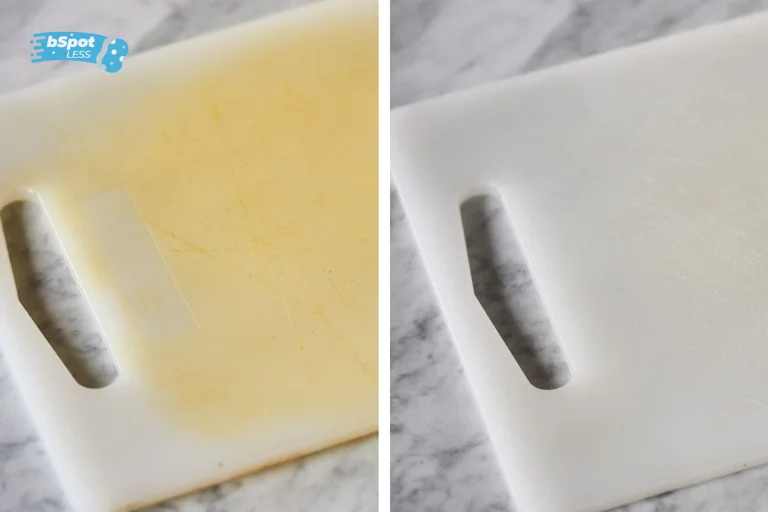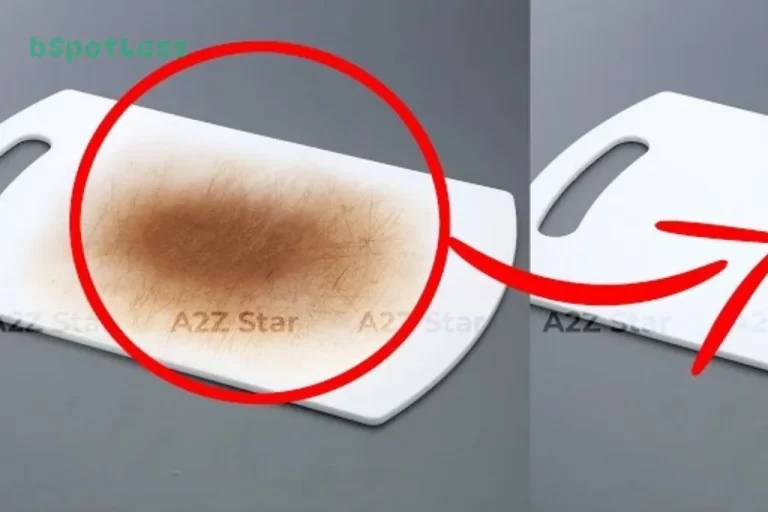Do you have a stained plastic cutting board? Don’t worry, it happens to everyone! Whether your cutting board is stained from food or from scratches and knife marks, we’ve got tips and tricks to help you remove those stains and make your board look as good as new. Keep reading to learn how to get rid of stubborn stains from your plastic cutting boards.
Identify the Type of Stain
Once you have identified the type of stain, it is important to choose the right cleaning products for the job. Depending on the type of stain, you will need to use a different combination of cleaning solutions. For example, if your cutting board is stained with food residue, vinegar or hydrogen peroxide may be necessary. If you are dealing with a grease stain, then baking soda, salt and water may be your best bet. It is important to test a cleaning solution on an unseen area of the cutting board before applying it to the stained area – this will help ensure that you don’t end up damaging your board further.
Prepare the Necessary Cleaning Products
When it comes to removing stains from plastic cutting boards, having the right cleaning products on hand is essential. Depending on the type of stain, you may need white vinegar, hydrogen peroxide, baking soda, salt, liquid dish soap, bleach, lemon juice, or a combination of them all. Make sure to have these items at ready before you begin cleaning so that you have everything you need for the task.
Test a Cleaning Solution on an Unseen Area
Next, you’ll want to test a cleaning solution on an unseen area of the cutting board. This way, you can make sure it won’t damage the board before you apply it to the stained area. You can create a natural cleaning solution with baking soda, salt, and water. To do this, mix one part baking soda, one part salt, and one part water until it forms a paste. Apply a small amount of the paste to an unseen area of the board and wait a few minutes. If the board isn’t discolored or marked in any way after a few minutes, you can move on to applying the paste to the stained area.
Apply the Cleaning Solution

Once you have identified the type of stain, it’s time to apply the cleaning solution. Depending on the type of stain, you may opt for white vinegar, hydrogen peroxide, baking soda, lemon juice or a mixture of bleach and water. For instance, if you have a food-related stain on your cutting board, you can make a paste out of baking soda, salt and water. Spread the paste over the stained area and let it sit for several minutes before scrubbing it away with a damp cloth or scrub brush. Or if you have an unpleasant odor on your plastic cutting board, you can deodorize it by sprinkling it with lemon juice and then drying it off. No matter what kind of stain you have on your board, it’s important to test a cleaning solution on an unseen area first to make sure it won’t damage the surface.
Scrub the Stained Area
Once you have identified the type of stain on your cutting board and prepped the necessary cleaning products, it is time to scrub the stained area. Make sure to use a non-abrasive scrubber so that you don’t damage the plastic. A metal scrubber or brush should not be used as they may scratch the plastic surface. Wet the stained area and apply a paste of baking soda, salt, and water. Scrub the board in a circular motion with your scrubber for several minutes. Finally, rinse the board with warm water and dry it thoroughly with a kitchen towel or paper towel. Now that you have scrubbed away the stain, it’s time to sanitize the board before you store it properly.
Rinse the Board
Once you have removed the stain, it is important to rinse the board thoroughly. You can do this by running the board under your kitchen sink. Make sure all of the cleaning solution has been completely removed. Once you have rinsed off the board, use a clean cloth or paper towel to wipe off any excess moisture. This will help prevent any residue from forming.
Dry the Board Thoroughly
Once you have scrubbed the stained area, rinse it off and dry the board with a clean cloth. Drying the board thoroughly is essential to prevent bacteria and mold from growing on the board. To ensure that the board is completely dry, you may even need to use a hair dryer or fan to speed up the process. Make sure to dry both sides of the board so that it won’t harbor any moisture.
Sanitize the Board
After cleaning your plastic cutting board, it is important to sanitize it. This will help to kill any bacteria that may be lingering on the board. One way to do this is by creating a sanitizing solution of one teaspoon of bleach to one quart of water. Make sure to mix the solution in a well-ventilated area and put on gloves before you begin. Using a cloth, sponge, or brush, apply the mixture to the board and let it sit for two minutes before rinsing it off with clean water. Dry the board completely before using it again. You can also use lemon essential oil if you have it on hand, as this is also a natural antibacterial agent that can help to keep your cutting board clean and safe for use.
Store the Cutting Board Properly
Once you’ve finished cleaning and sanitizing your plastic cutting board, it’s important to store it properly to prevent future staining. One of the best ways to do this is to hang your board on a wall or from the ceiling with a sturdy hook. This will ensure that the board is not in contact with any other surfaces and that it can dry completely. Alternatively, you can place a drying mat or clean towel underneath the board to provide extra ventilation while it dries. Regardless of which option you choose, it’s essential to store the cutting board in a clean and dry place.
Prevent Future Stains
Now that you know how to remove stains from your plastic cutting board, you’ll want to take steps to prevent them in the future. To prevent staining, avoid cutting meats, poultry, seafood, and dairy products directly on the board. When preparing these foods, use a separate cutting board and clean it between each use. To keep your plastic cutting board looking its best, wash it with hot soapy water after each use and dry it thoroughly. You can also deodorize your board with lemon juice or a mixture of baking soda, salt and water. Additionally, you can sanitize your board by spraying it with a 3% hydrogen peroxide or vinegar solution. Following these steps will help keep your plastic cutting board looking like new.

